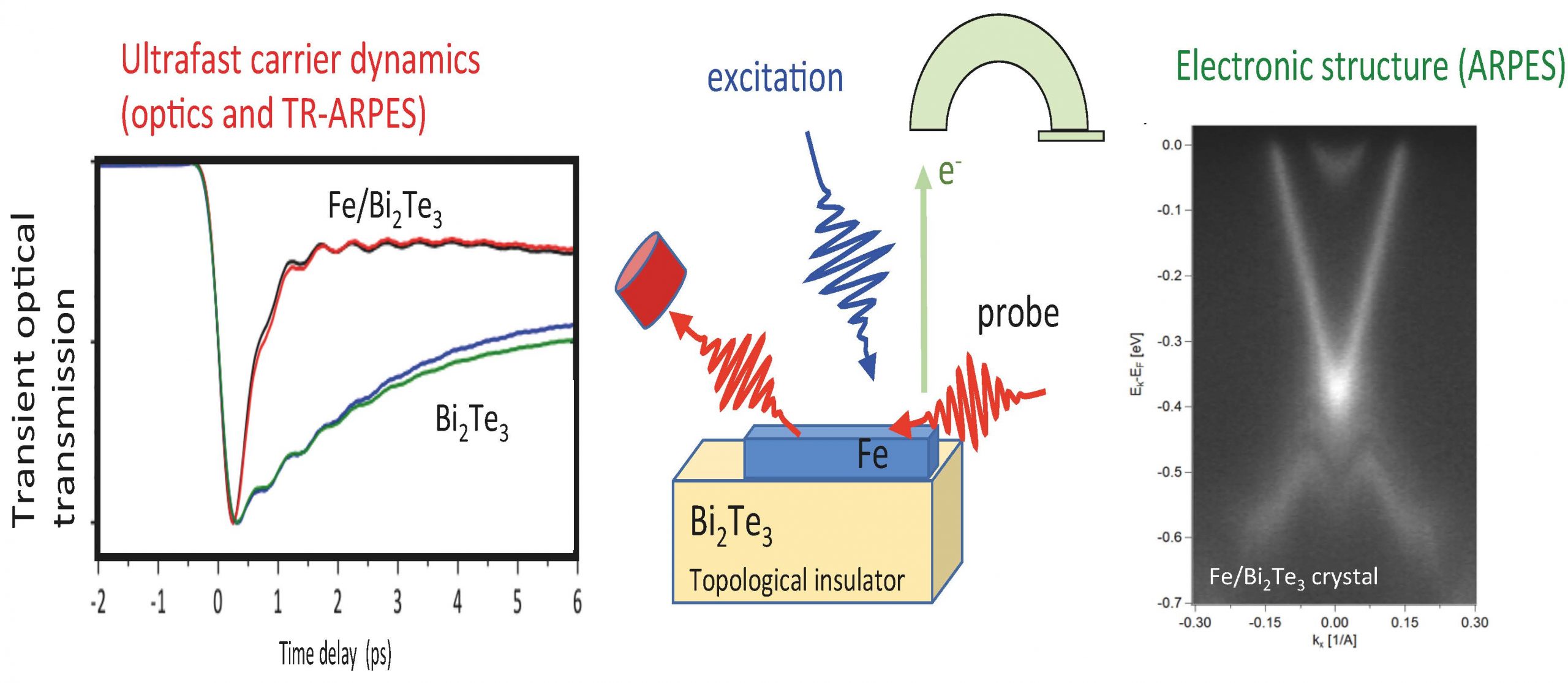Scientists provide relevant insights on topological insulators
|Topological insulators are materials that behave as insulators in their interior but conduct on their surface, meaning that electrons can only flow along the surfaces. They are promising materials for future spintronic-based devices capable of ultrafast data processing. Other potential applications include quantum computing, magnetoelectronic, and optoelectronic. At the moment, the study of topological insulators has entered the stage of finding the best possible systems to harness their unique properties.
In a research stemmed from the CERIC internal project Dyna Chiro (Principal Investigator: Dr. Kevin Prince), Prof. Pascal Ruello (University of Le Mans), Prof. Jacek Szade (University of Silesia and synchrotron SOLARIS), and colleagues, evaluated the properties of a material based on Bi2Te3 influenced by the proximity of an ultrathin layer of a magnetic metal (iron), or a magnetic insulator (iron oxide). Among the experimental techniques employed in this study, there is Angle-Resolved Photoelectron Spectroscopy (ARPES), performed at Polish CERIC Partner Facility at synchrotron SOLARIS in Krakow. The time-resolved measurements, that provided insights on carrier ultrafast dynamics, were performed in Le Mans, France and in Nova Gorica, Slovenia.

The results of this research work provide relevant information about the quantum dynamics at the interface of magnetic and topological insulators layers to guide the realisation of hybrid nanostructures for spintronic devices. Advancements in this field could lead to disruptive applications in vanguard technological sectors that will become prominent in the near future.



